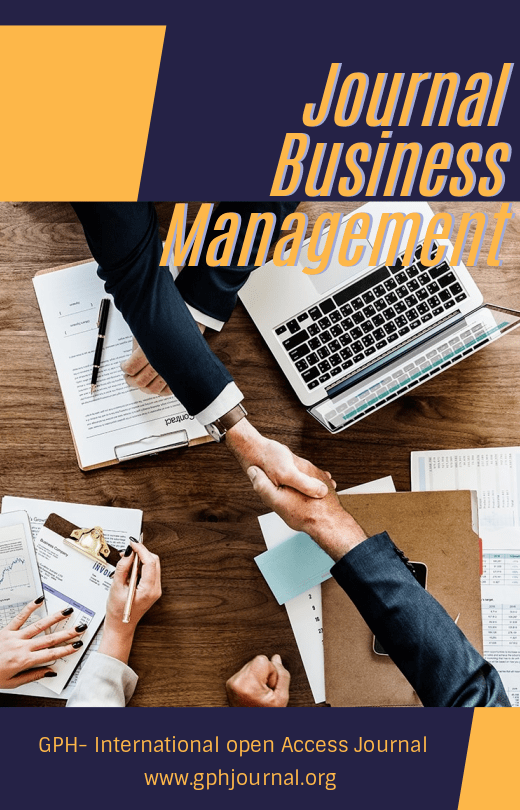TOURISM DESTINATION ATTRIBUTES AND ECONOMIC DEVELOPMENT IN RIVERS STATE
Abstract
We set out to examine Tourism Destination Attributes, such as: “Amenities, Accessibilities and Activities”, and Economic Development in Rivers State. These were guided by six research questions and six research Hypotheses. A Correlational Survey design was adopted. The sample size of 323 Tourists visiting Centers in Port Harcourt, Rivers State was utilized. Self-constructed instrument tagged, ‘Tourism Destination Attributes and Economic Development Questionnaire (TDAEDQ)’ was used for data collection. The draft of the Questionnaire was validated by our Senior Colleagues in the Department of Hospitality Management and Tourism. The reliability of the instrument was tested using test-retest reliability to determine the internal consistency of the Questionnaire and correlated with Cronbacch Alpha. The reliability index was high, which means that the instrument was reliable. The research questions were analyzed using Mean and Standard Deviation; while, Pearson Moment Product Correlation was used to test the Null Hypothesis at 0.05 level of significant. The findings revealed mild positive significant relationships between Tourism Destination Attributes, (Amenities, Accessibility and Activities) and Economic Development of Tourist Sites in Rivers State. This indicated that tourism Destination Attributes, such as Amenities, Accessibility and Activities are not very necessary in decision making of tourists seeking where to spend their Leisure time. Hence, it was recommended that the Management of Port Harcourt Tourists Destination Sites should invest more in creating awareness of the happenings at the Port Harcourt Tourists Destination Sites.
Downloads
References
Buhalis, H. (2000). Tourism & Hospitality Essentials (THE) Journal, 7 (2), 97-112.
Cooper, O. &Hall M. (2005). A Structural Model of Destination Image, Tourists Satisfaction and Destination Loyalty. International Journal of Business and Management Studies, 3(2).
Crouch, G. I. & Richie, J., (2005). Application of the Analytic Hierarchy Process to Tourism Choice and Decision Marking: A Review and illustration Applied to Destination Competitiveness. Tourism Analysis, 10, (1), 17-25.
Das, E. (2013). Destination Maintenance: Why Sedona Needs Schnebly Hill', Cornell Hotel and Restaurant Administration Quarterly, 32.
Enright, M. & Newton, J, (2005). Tourism Destination Competitiveness: A Quantitative Research. Tourism Management. 25: 777-788.
Gartner, C. (2004). Product Formulation in Tourism. Tourism and Marketing, 13.
Hall, C., (2009). Tourism Planning, Policies, Processes and relationships. Essex: Pearson Hall
Honey, M. (2008). Ecotourism and sustainable development: Who owns paradise? Washington DC: Island Press.
Hsu, T., Tsai, Y., & Wu, H., (2009). The Preference Analysis for Tourist Choice of Destination: A case Study of Taiwan. Tourism Management, 30, (2), 288-297.
Ibimilua, T. (2009). How Destination Image and Evaluative Factors Affect Behavioral Intentions. Journal Elsevier Tourism Management, 28, 1115-1122.
Jumai, R. (2017). Tourism Marketing and Management. 1st edition, Manglam Publications.
Kim, J. H., (2014). The antecedents of Memorable Tourism Experiences: The Development of a Scale to Measure the Destination Attributes Associated with Memorable Experience. Tourism Management, 44: 34-45.
Kim, J., Ritchie, J. & McCormick, B., (2012). Development of a Scale to Measure Memorable Tourism Experience. Journal of Travel Research. 51, (1). 12-25.
Kim, K., Hallab, Z., & Kim, J., (2012). The Moderating Effect of Travel Experience in a destination on the Relationship between the Destination Image and the Intension to Visit. Journal of Hospitality Marketing and Management, 21: 486-505.
Kim, (2008). Infrastructural Development for Economic Development in Developing Countries.
Klenosky, M. (2002). Global Hospitality Insights - Top thoughts for 2002, EY, New York: EY
Leiper, N., (2005). Tourism Management. French’s Forest: Australia: Pearson Education
March, P. & Woodside, J. (2014), Marketing for Hospitality and Tourism, Pearson Education.
Newman L. (2015). The International Marketing of Travel and Tourism: A Strategic Approach, Macmillan.
Ninemeier, W. & Perdue, G. (2005). Environmental management, environmental image and the competitive tourist attraction. Journal of Sustainable Tourism, 13(6), 617-635.
Ollor, H. Y. &Deigh, N., (2020). Cultural Resources Management and Economic Development in Twon, Brass Local Government Area, Bayelsa State. International Journal of Management Sciences and Entrepreneurship. Vol. 11. No. 7. Pp. 185-209. June.
Ollor, H. Y., (2018). Introduction to Hospitality Management and Tourism. Unpublished Class Note. Department of Hospitality Management and Tourism. Faculty of Management Sciences. University of Port Harcourt.
Omerzel, C. C. (2006). Tourist Loyalty is all about Prices, Culture and the Sun: A Multinomial Logistic Regression of Tourist Visiting Athens. Procedia-Social and Behavioral Sciences, 175, 32-38.
Palmer, M. (2000). Service Quality and its Impact on Tourist Satisfaction. Journal of Contemporary Research in Business, 4(12).
Papatheodorou, V. (2006). Destination Attributes Evaluation, Satisfaction and Behavioral Intentions: A Structural Modelling Approach. International Journal of Tourism Research.
Pawaskar, E. & Goel, C. (2014). The Effect of Service Quality Perceptions of Turkish Cruise Tourists on Their Behavioral Intention and Satisfaction. International Journal of Management Sciences and Business Research, 3, 2226-8235.
Reid, M. & Reid, R. (2003). The Contribution of Tourist Attraction, Accessibility and Amenities in Creating Tourist Loyalty. Journal of Business and Economics Review. 3 (4) 92 – 98.
Wilcon, E. &Ramalagan, G. (2003). Marketing Tourism Destinations: A Strategic Planning
Approach, New York: Wiley
Zhang & Lam, (2013). An Analysis of Mainland Chinese Visits’ Motivation to visit Hong
Kong. Tourism Management, 20, (5), 587-594.
Copyright (c) 2023 Ollor, Helen Y. and Egbuluka, Delight E.

This work is licensed under a Creative Commons Attribution-NonCommercial-NoDerivatives 4.0 International License.
The authors and co-authors warrant that the article is their original work, does not infringe any copyright, and has not been published elsewhere. By submitting the article to GPH-International Journal of Business Management, the authors agree that the journal has the right to retract or remove the article in case of proven ethical misconduct.




























